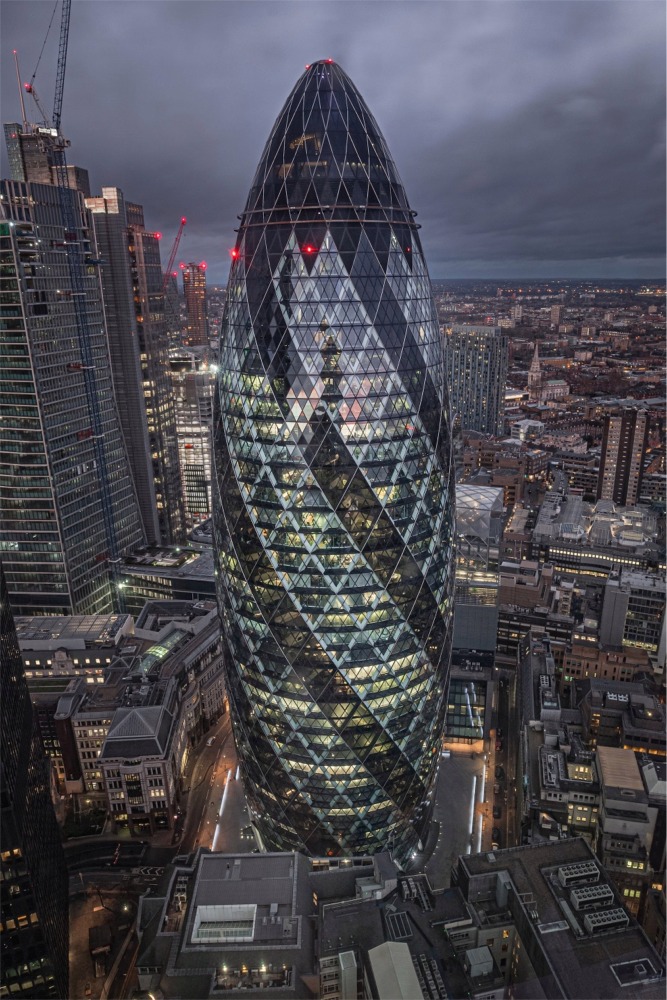30 St. Mary Axe
Home > Photos from England > London Gallery 1 > 30 St. Mary Axe

The London skyline had been transformed into a bejeweled tapestry of lights, hazy and beautiful from the windows of 30 St. Mary Axe. Even in its silent glory, The Gherkin is full of modern grandeur, its iconic façade of curved glass reflects the sunlight that spills over the city like a million stars.
But as night descends, the Gherkin is transformed into a breathtakingly exquisite structure, its glass reflecting the hazy oranges and pinks of the sky, radiating a gentle yet commanding frame of beauty that leaves its onlookers breathless. As the sun sets and the moon rises, its reflection on the windows of the Gherkin was like looking into a mirror of another world — one full of possibility and hope, of adventure and dreams, and most of all, of profound beauty. Lights from street lamps and buildings were scattered like diamonds in the night, creating a magical and mesmerizing effect that begged for every passerby to be captivated.
The Gherkin is a symbol of London's glory, an ode to its vibrant history and thriving future, a reminder of the beauty even in the midst of the city's darkness.
30 St Mary Axe
St Mary Axe was a medieval parish in the City of London whose name survives as that of the street which formerly occupied it. The Church of St Mary Axe was demolished in 1561 and its parish united with that of St Andrew Undershaft, which is situated on the corner of St Mary Axe and Leadenhall Street. The site of the former church is now occupied by Fitzwilliam House, a fact acknowledged by a blue plaque on the building's façade. Nearby parishes include the medieval Great St Helen's (1210) and St Ethelburga (14th century).
The street name may derive from a combination of the church dedicated to the Virgin Mary and a neighbouring tavern that prominently displayed a sign with an image of an axe, or simply from the church name itself, which may have come from the axes used by the Worshipful Company of Skinners, who were patrons. The sign of an axe is reported to have been present over the east end of the church.
The street St Mary Axe is now most notable for the Baltic Exchange at No. 38, and the "Gherkin" at No. 30, a distinctively shaped skyscraper built on the site of the former buildings of the Baltic Exchange and the UK Chamber of Shipping (destroyed by an IRA bomb in 1992). The street originates at its northern end as a turn-off Houndsditch, with traffic flowing one-way southbound, and it originates at its southern end as a turn-off Leadenhall Street, with traffic flowing one way northbound. Both one-way portions of St Mary Axe converge at Bevis Marks, where traffic is forced westward into Camomile Street.
Number 70 St Mary Axe appears in several novels by the British author Tom Holt as the address of a firm of sorcerers headed by J. W. Wells. This is itself a reference to Gilbert and Sullivan's The Sorcerer. In the song "My Name Is John Wellington Wells", the lyric renders his address as "Number Seventy, Simmery Axe"; this reflects the fact that some Londoners pronounce the street's name as "S'M'ry Axe" rather than enunciating it fully. The Tom Holt novels and The Sorcerer were written before the current office building at 70 St Mary Axe was constructed.
From Wikipedia, the free encyclopedia.


